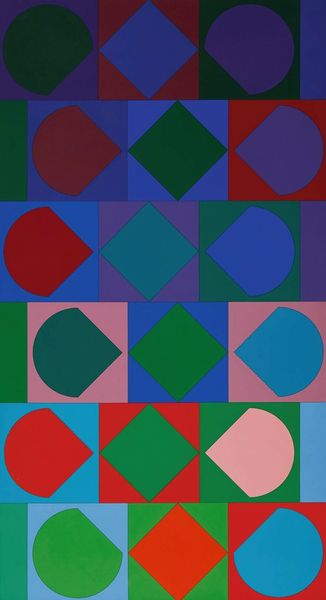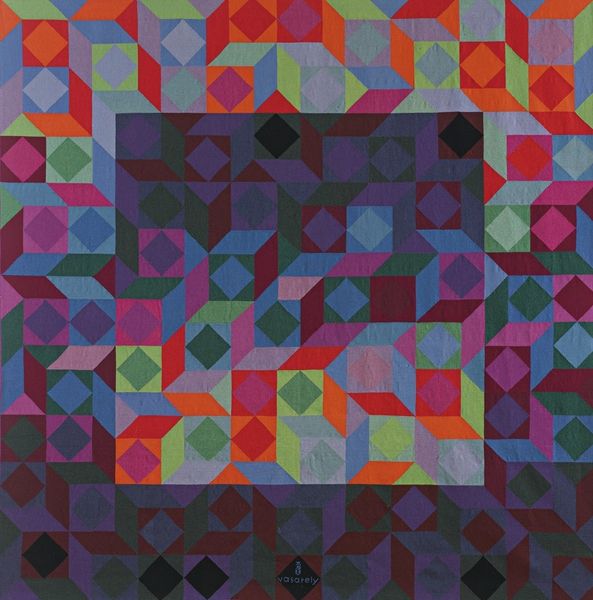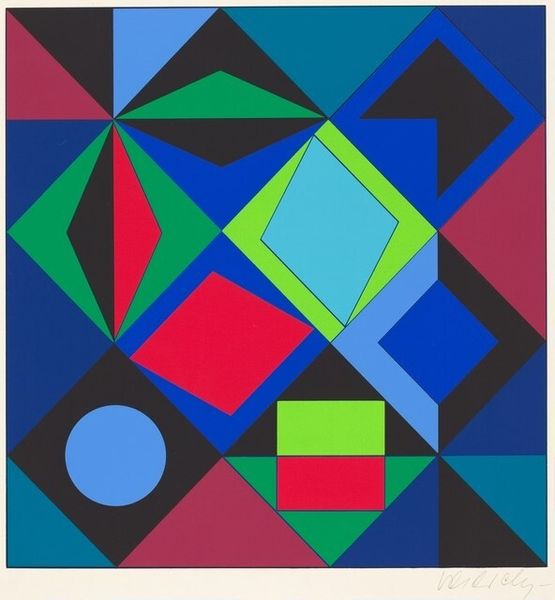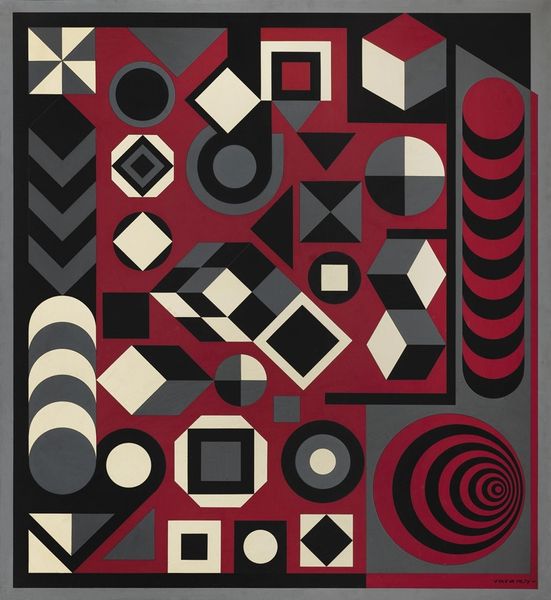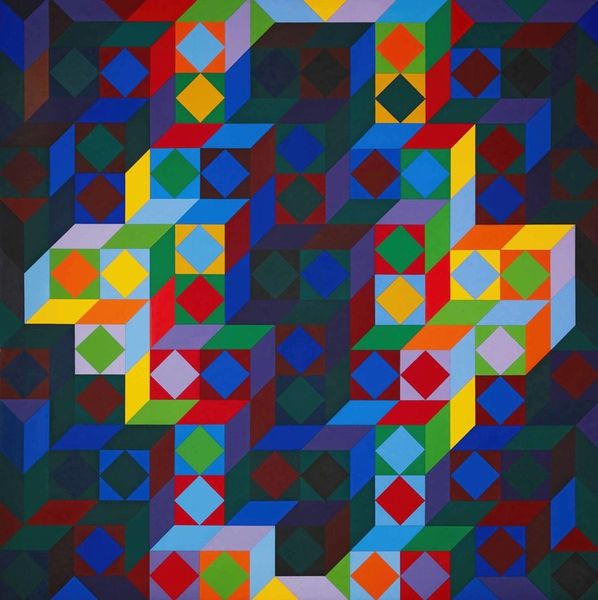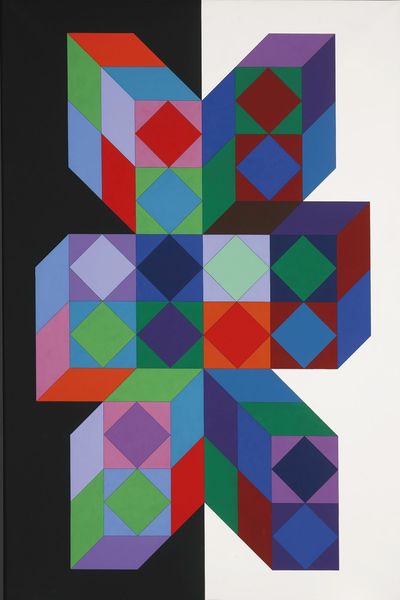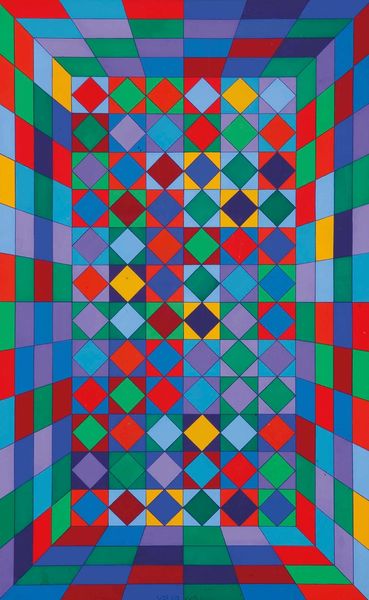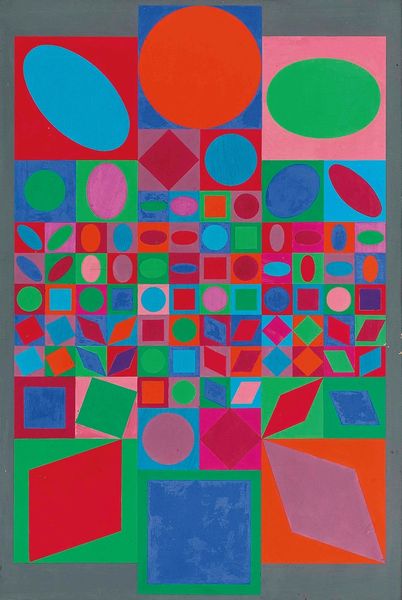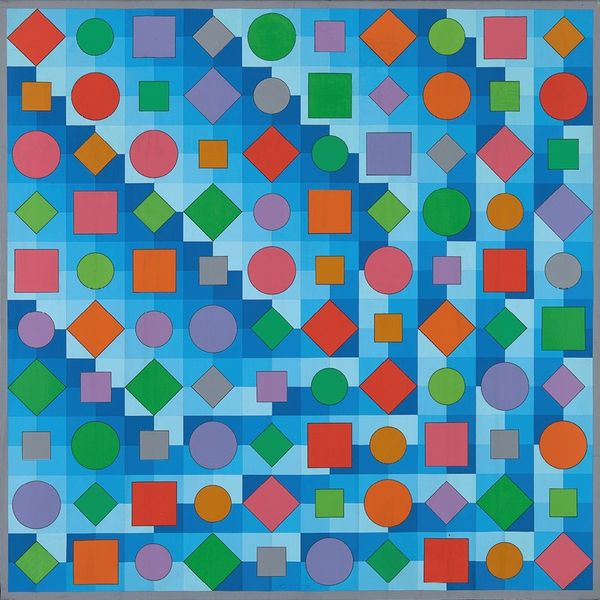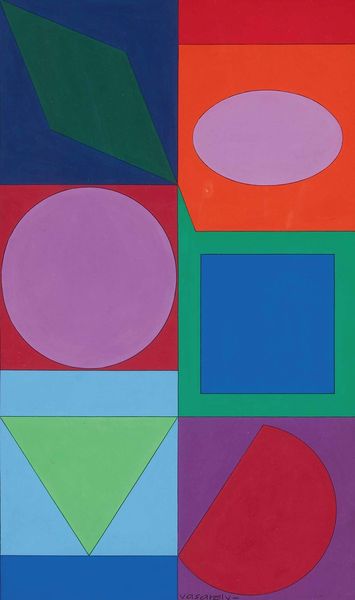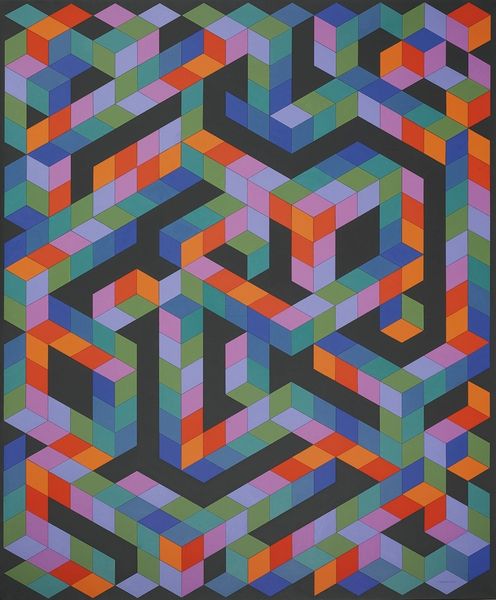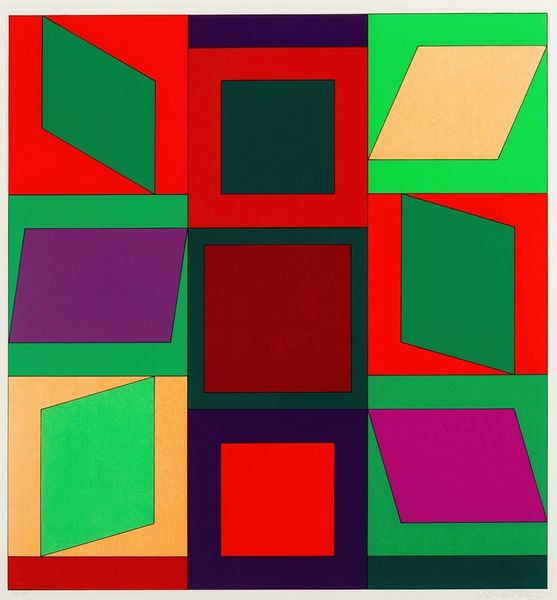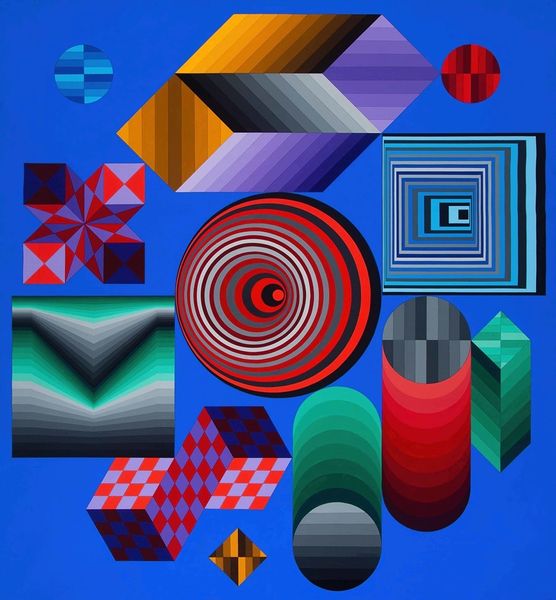
Copyright: Modern Artists: Artvee
Editor: This is "TILL" by Victor Vasarely, created in 1979, using acrylic paint. It’s a very striking, almost dizzying composition of geometric shapes. How do you interpret this work? Curator: Well, seen through an activist lens, Vasarely’s Op Art raises some interesting questions about perception and control. In the late 70s, ideas around consumerism and visual culture were really taking hold, shaping our realities. Doesn't this piece reflect how we are increasingly being influenced, even manipulated, by visual stimuli and coded imagery? Editor: I hadn’t thought about it that way, I was just thinking about colors. But I see what you mean – the precise shapes and colors are definitely overwhelming. Was Vasarely trying to make a statement about society? Curator: Perhaps not overtly. But, as theorists like Foucault would suggest, power structures often operate through seemingly benign means. What role do you think artists have in exposing hidden manipulative agendas or power dynamics, and to reflect social control via their artworks? Editor: Hmmm. Well, this definitely gives me a new perspective on Op Art and how art reflects cultural concerns, even abstract works like this. Thanks for this discussion. Curator: Absolutely. Thinking about art in its socio-historical context makes our understanding all the more richer and can instigate critical analysis.
Comments
No comments
Be the first to comment and join the conversation on the ultimate creative platform.
